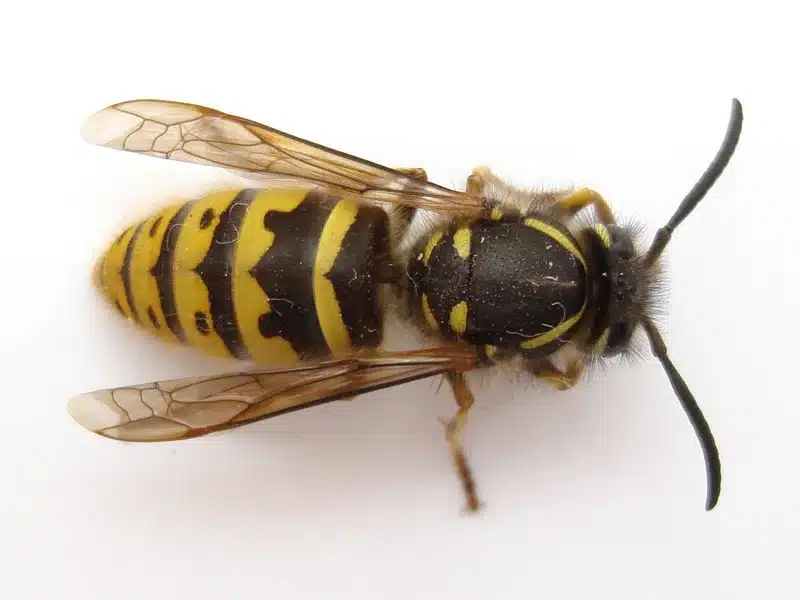When homeowners in the DC, Virginia, and Maryland area spot aggressive stinging insects building underground nests, they often call them “ground hornets.” However, this common term actually describes two very different types of wasps that nest in soil. Understanding what these insects look like and how to treat them properly can help you protect your family and property.
As a registered technician with four years of experience handling these situations, I’ve responded to countless calls where homeowners discover what they think are ground hornet nests in their yards. Our family business has been serving the DMV area for over 50 years, and we’ve learned that proper identification is the first step toward effective treatment.
Understanding the Term “Ground Hornet”
The term “ground hornet” isn’t actually a scientific name. Instead, it’s a colloquial label that homeowners use to describe two completely different kinds of wasps that happen to nest in the ground.
Social yellowjackets are the first type. These aggressive wasps build colonies underground and are responsible for most stinging incidents. They’re actually not true hornets at all, but they get mistaken for them because of their size and aggressive behavior.
Eastern cicada-killer wasps are the second type. These are solitary insects that dig individual burrows to raise their young. Despite their intimidating size, they’re much less aggressive than yellowjackets.
Common Species Labeled as Ground Hornets
Social Ground-Nesting Yellowjackets
The Eastern yellowjacket is the most common ground hornet species in our region. Workers measure about 8.5 to 12 millimeters long, while queens can reach 18 millimeters. You can identify them by the distinctive wide, flat-topped black “anchor” mark on their first abdominal segment.
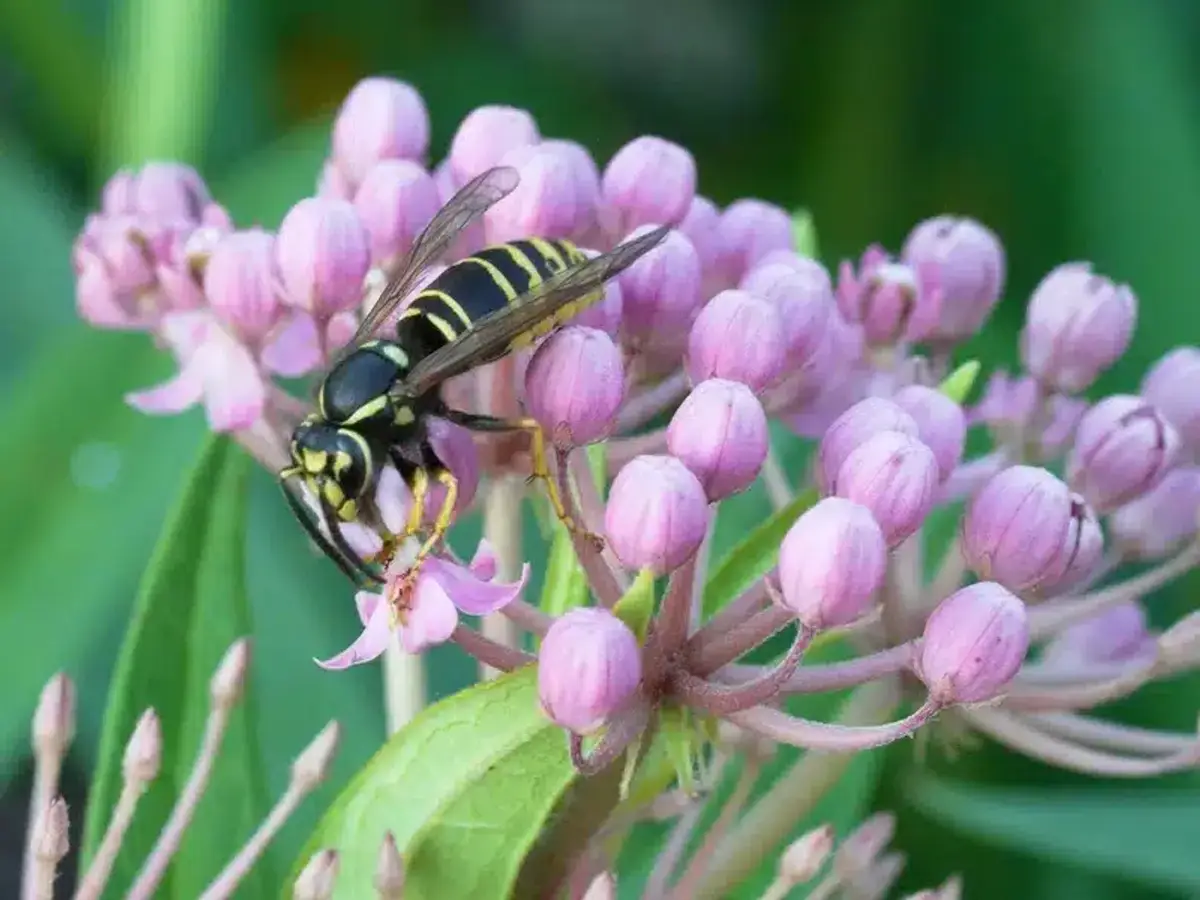
German yellowjackets also nest underground occasionally. They’re an invasive species that shows a black diamond pattern on their abdomen. Additionally, Southern yellowjackets sometimes parasitize other yellowjacket nests early in the season.
For more detailed identification help, check out our Types of Hornets and Wasps: ID Guide for Homeowners to compare various species.
Solitary Eastern Cicada-Killer Wasps
These impressive insects measure about 50 millimeters long - roughly twice the size of yellowjackets. They’re black with pale-yellow patches on their abdomen and have distinctive reddish wings. Males buzz around intruders but can’t actually sting.
Female cicada-killers dig individual burrows about 30 centimeters deep. They provision these chambers with paralyzed cicadas to feed their larvae. Despite their size, they rarely sting unless handled directly.
Look-alike True Hornets in the Region
True hornets like the European hornet normally nest above ground in tree cavities or building voids. You won’t typically find them creating ground nests. However, bald-faced “hornets” are actually aerial yellowjackets with black and white coloring that build paper nests in trees.
Understanding these differences helps prevent misidentification and unnecessary panic. Our Hornet vs Wasp: How to Identify Common DC Area Species guide provides additional comparison details.
Appearance of Ground Hornets
Size, Coloration, and Markings
Yellowjackets have bright yellow and black striped patterns that make them easy to spot. Their bodies are relatively hairless and have a defined “wasp waist” between the thorax and abdomen. Workers are smaller than queens, but both have the same basic coloration.
Cicada-killers are much larger and more robust. Their black bodies with yellow markings and reddish-brown wings make them look intimidating. However, their size actually makes them less likely to be aggressive toward humans.
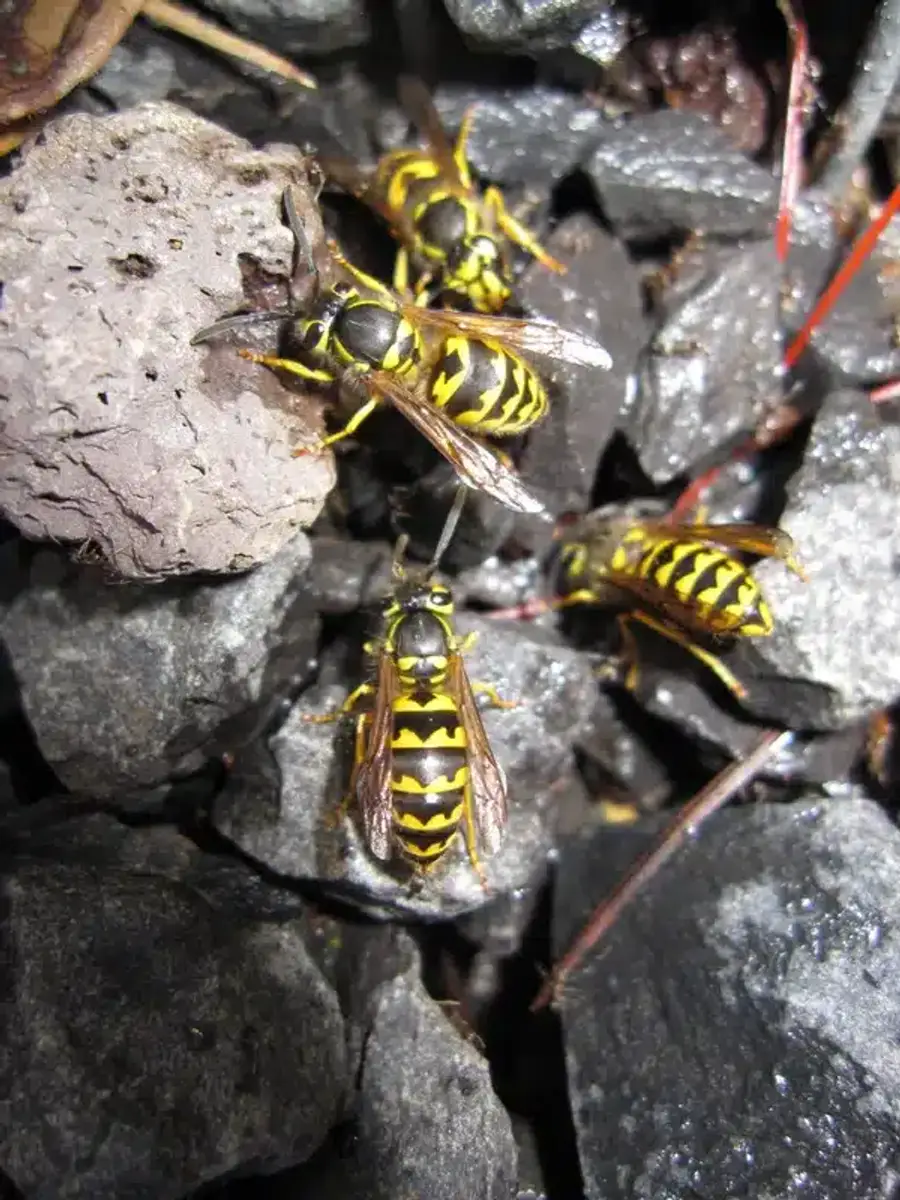
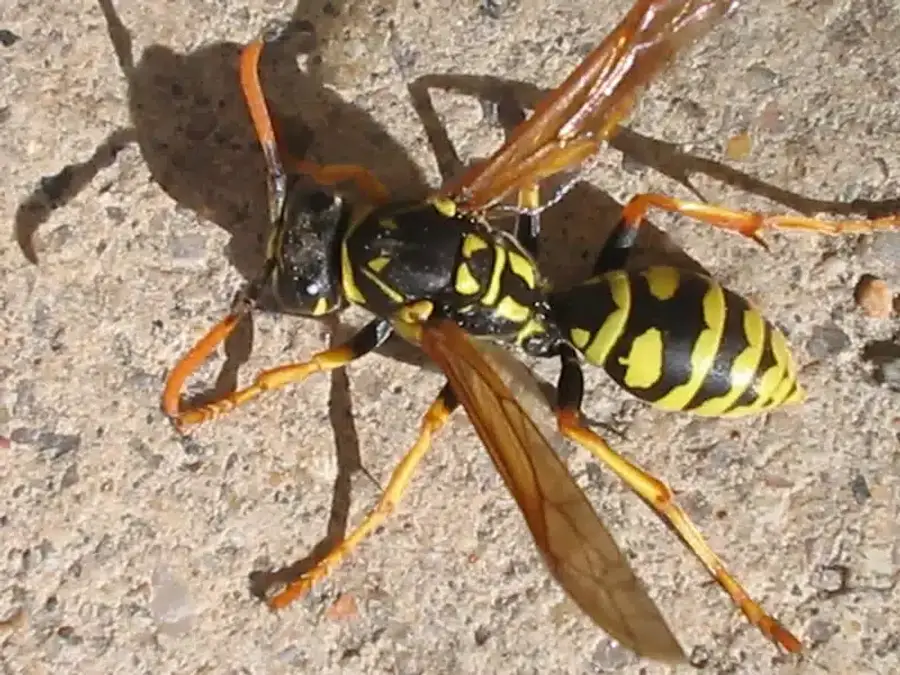
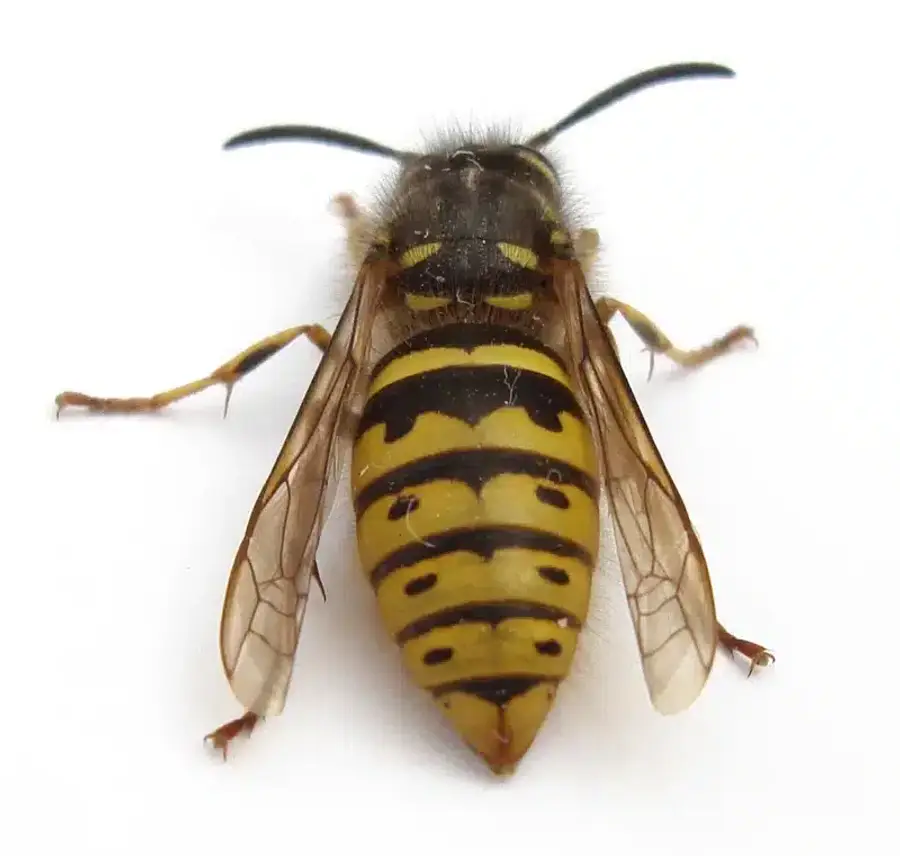

For comparison with similar species, review our resources on Bald-Faced Hornets and Yellowjackets.
Distinctive Behaviors and Flight Patterns
Yellowjackets fly in quick, darting patterns and often hover around food sources. They’re particularly attracted to sugary drinks and protein sources like meat. You’ll notice heavy traffic around their nest entrances during peak activity periods.
Cicada-killers have a more deliberate flight pattern. Males patrol territories and may dive-bomb perceived threats, but this is just defensive posturing. Females focus on hunting cicadas and provisioning their burrows.
Nest Identification and Architecture
Yellowjacket Nest Entrances
A yellowjacket ground hornet nest appears as a thumb-sized hole with constant insect traffic. The soil around the entrance becomes bare and slightly enlarged from excavation. You’ll see workers coming and going throughout the day, especially during warmer weather.
These nests can house several thousand individuals by late summer. The underground paper comb structure isn’t visible from the surface - only the entrance hole gives away the colony’s location.
Cicada-Killer Burrows
Cicada-killer burrows have a distinctive U-shaped pile of soil pellets next to the entrance. The entrance itself measures about 1 centimeter in diameter. These “throw piles” are characteristic markers that help distinguish cicada-killer burrows from yellowjacket nests.
Females often choose sunny, well-drained locations like lawns, playground areas, or joints between flagstones. Each female maintains her own individual burrow system.
Understanding proper Wasp Nest Removal: Why Professionals Prevent Return Visits techniques becomes crucial once you’ve identified the nest type.
Seasonal Ground Hornet Activity in the DMV
April through May marks the beginning of yellowjacket activity. Overwintered queens select abandoned rodent holes or soil voids to start new colonies. Initially, you might not notice much activity.
June and July bring exponential growth. Worker populations explode, and nests can exceed several thousand individuals. This is when most homeowners first notice significant ground hornet activity.
August and September represent peak season. Colonies reach maximum size, and defensive behavior increases dramatically. Most human-wasp encounters happen during this period.
October and November signal the end. New queens and males are produced, then the original colony dies after the first hard frost. Understanding this timeline helps determine whether treatment is necessary.
Risks and Dangers of Ground Hornet Infestation
Yellowjackets can sting repeatedly and release alarm pheromones that attract more workers. They’re responsible for the majority of stinging insect incidents in the United States. Unlike bees, they don’t lose their stinger after attacking.
Nest Disturbance Danger
Disturbing a ground hornet nest can provoke aggressive swarming and result in multiple stings. This is why I always advise homeowners against attempting DIY removal methods. The risk simply isn’t worth it.
Cicada-killers pose much less risk. They seldom sting unless handled directly, and males can’t sting at all despite their intimidating behavior.
Preventive Steps to Prevent Ground Hornet Problems
Sanitation forms the foundation of prevention:
- Seal trash cans tightly
- Clean outdoor grills after use
- Cover drinks and food during outdoor activities
- Remove fallen fruit from trees
Vegetation management helps deny nesting sites:
- Overseed thin turf areas
- Add mulch or dense groundcover to bare soil
- Maintain healthy lawn density
- Fill rodent burrows when discovered
These steps won’t eliminate existing colonies but can prevent new ones from establishing next season.
Non-Chemical Controls: Traps and Cultural Methods
Commercial lure traps using heptyl butyrate can intercept some species. However, these traps are species-specific and work better as supplemental tools rather than primary control methods.
Research on Trap Effectiveness
According to University of California IPM, trap effectiveness varies significantly between yellowjacket species. Traps won’t eliminate established ground hornet colonies - they’re most effective as preventive measures or to reduce foraging pressure.
Chemical Treatments: Best Practices
Dust Formulations
Dust treatments provide the most reliable results for subterranean nests. Silica aerogel combined with pyrethrins, carbaryl, or cyfluthrin works effectively when applied properly.
Colony Collapse Timeline
Texas A&M Extension research shows colony collapse typically occurs within 24-48 hours when dust treatments are applied properly.
Timing and Protective Equipment
Essential protective equipment includes:
- Bee suit or thick coveralls
- Protective veil
- Gauntlet gloves
- Secure all cuff openings with tape
Don't Skip Safety Equipment
Many homeowners underestimate the importance of proper protection. I’ve seen too many people get stung because they tried to cut corners on equipment.
Why You Should Call a Professional
After four years as a registered technician, I’ve learned that ground hornet nest removal requires specialized knowledge and equipment. Our technicians follow strict protocols when approaching these nests, including using professional-grade protective gear and targeted application methods.
Professional treatment involves applying insecticides directly into nest entrances during optimal timing windows. We use products that have passed through our internal research team - the same ones we’d feel comfortable using in our own homes.
For severe infestations, we may need multiple visits to ensure complete colony elimination. Sometimes we’ll remove dead nests after treatment to prevent re-settlement issues.
Family Legacy: Schulz Approach to Ground Hornet Control
Our family business has been serving the DMV area for over 50 years, and we’re now into our third generation. During that time, we’ve developed proven methods for handling ground hornet situations while prioritizing both effectiveness and environmental responsibility.
The Better Promise means you’re not locked into contracts and can cancel anytime with 30 days notice. Additionally, if you’re not getting results, you have access to unlimited callbacks until we resolve the issue completely.
We’ve removed 9 of the harshest chemicals common in our industry, choosing alternatives like Essentria and Alpine that meet our strict standards. Each product is one we would feel comfortable using in our own homes.
Post-Treatment Inspection and Follow-Up
Once activity ceases completely, you can rake out and bag any exposed comb material. However, leaving nests to decompose naturally works fine too - soil microbes break down paper combs quickly.
Better Termite & Pest Control’s Ground Hornet Services
Our registered technicians serve the entire DMV area with targeted ground hornet treatments. We understand local species behavior and seasonal patterns that affect treatment timing and methods.
Service areas include:
- King George Pest Control for Southern Maryland properties
- Northern Virginia Pest Control covering suburban and rural areas
- Chevy Chase Pest Control for Montgomery County residents
- Pest Control Arlington serving Northern Virginia communities
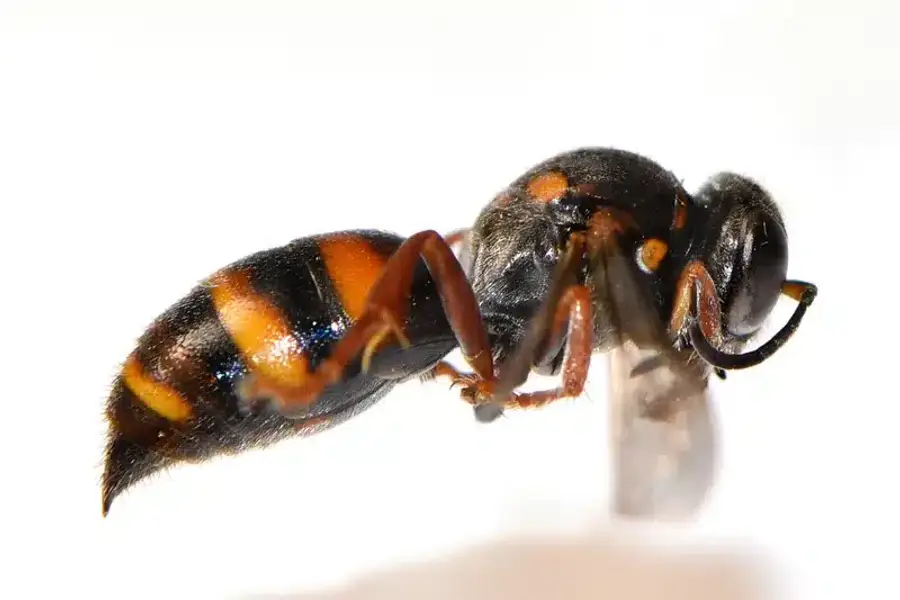
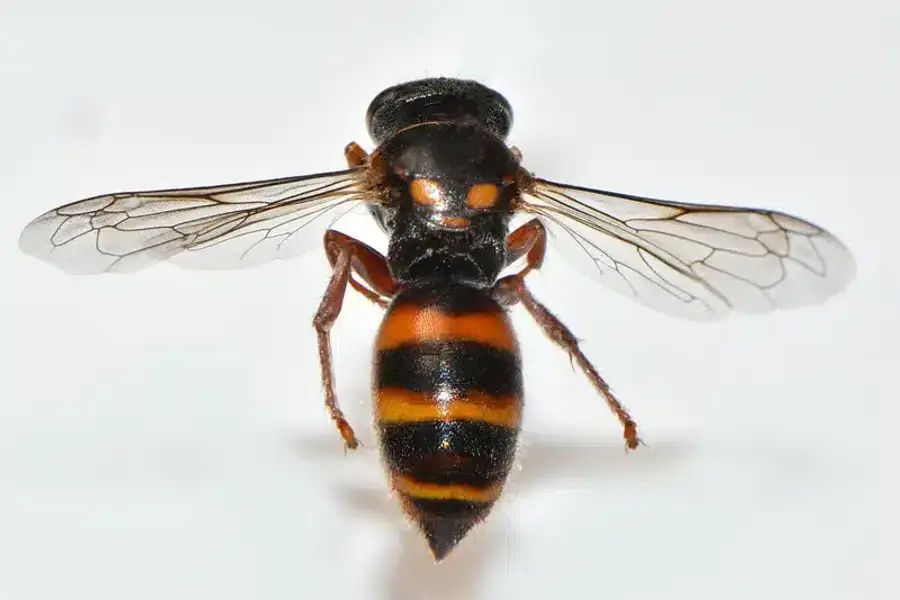
Each location receives the same family-owned attention and expertise that’s made us a trusted name for over five decades. We also provide detailed Paper Wasps identification and treatment services for related stinging insect issues.
Ground hornet problems require immediate attention, especially when nests are located near high-traffic areas. Don’t risk multiple stings or incomplete treatment with DIY methods.
Research on DIY Removal Risks
According to Clemson Extension, disturbing nests without proper equipment and timing often makes situations worse.
Frequently Asked Questions
What do ground hornets look like?
+
Ground hornets are actually two different types of wasps. Yellowjackets measure 8.5-12mm with yellow and black stripes and a distinctive black anchor mark on their abdomen. Eastern cicada-killers are much larger at 50mm, with black bodies, yellow patches, and reddish wings.
Are ground hornets dangerous?
+
Yellowjackets pose the greater threat because they can sting repeatedly and release alarm pheromones that attract more workers. They're responsible for most stinging insect incidents. Cicada-killers rarely sting unless handled directly, despite their intimidating size.
How do I find a ground hornet nest?
+
Look for thumb-sized holes with heavy insect traffic for yellowjacket nests. The soil around entrances appears bare and slightly excavated. Cicada-killer burrows have distinctive U-shaped soil piles next to 1cm diameter entrance holes. Watch returning foragers during daylight to locate nest entrances.
What treatments are effective against ground hornets?
+
Dust formulations applied directly into nest entrances provide the most reliable results. Treatment timing matters - approach nests at dusk or early morning when activity is lowest. Professional-grade insecticides designed for subterranean nests work best. [University of Kentucky Extension](https://entomology.ca.uky.edu/ef620) confirms dust applications are most effective for ground-nesting species.
Can I handle ground hornet removal myself?
+
DIY ground hornet removal carries significant risks of multiple stings and incomplete colony elimination. Professional treatment requires specialized equipment, proper timing, and targeted application methods. Even experienced homeowners often underestimate the aggressive response that nest disturbance can trigger.
When are ground hornets most active?
+
Ground hornet activity peaks from August through September when colonies reach maximum size. Daily activity is highest during warm, sunny conditions. Yellowjackets become increasingly aggressive as autumn approaches and food sources become scarce.
How long do ground hornet colonies last?
+
Yellowjacket colonies are annual, lasting from spring through the first hard frost in late October. Only new queens survive winter to start colonies the following year. Cicada-killers are active from June through September, with adults dying before winter while larvae develop underground.
Will ground hornets return to the same nest location?
+
Yellowjacket colonies don't reuse old nests, but new queens may select similar locations if conditions remain favorable. Filling rodent burrows and maintaining dense turf helps prevent re-establishment. [University of Maryland Extension](https://extension.umd.edu/resource/cicada-killer-wasps) notes that cicada-killers often return to successful nesting sites annually.
What attracts ground hornets to my property?
+
Yellowjackets are attracted to protein sources, sugary substances, and existing rodent burrows for nesting. Cicada-killers prefer sunny, well-drained soil areas for digging burrows. Poor lawn maintenance, exposed soil, and outdoor food sources increase attraction factors.
How much does professional ground hornet treatment cost?
+
Treatment costs vary based on nest location, colony size, and accessibility factors. Most treatments include a 30-day warranty period for additional applications if needed. Multiple nests or difficult access locations may require additional service visits. Contact our team for specific pricing based on your situation.
With five years of hands-on experience in the pest control industry, George Schulz is a registered technician with the Virginia Pest Management Association and a proud third-generation professional in a family business that's been protecting homes for over 57 years. He manages and trains a team of service pros while also leading internal research efforts—recently spearheading a deep-dive review of thousands of documents on pest control materials to hand-pick the most kid and pet friendly, most effective solutions tailored specifically for homes in the DC metro area.
